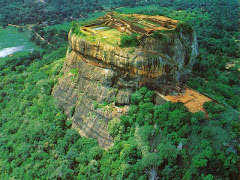
Polonnaruwa
taking inspiration from their Hindu conquerors the resurgent Sinhalese kings moved to this city, triggering an amazing artistic renaissance.Polonnaruwa was the medieval capital of Sri Lanka. In its prime, the city was protected by 6km (3.5miles) of strong encircling walls. Strategically it commanded all the crossing over the Mahaweli River, guarding the increasingly powerful southern Province, Ruhuna. In AD 993 the Cholas looted and burnt Anuradhapura and used Polonnaruwa as their military base for 77years, resulting in an interesting blend of south Indian Hindu culture and Sinhalese Buddhist art and architecture.
Around the Tank
"Not even a drop of water from the rain must flow into the ocean without being made useful to man", declared the Grand Monarch parakrambbahu when he constructed the Parakrama Samudra which covers an area of 2,430 hectares (6,000acres). This monumental feat of engineering had 11 channels leading water off in different directions to feed a network of irrigation canals and minor tanks. The government run rest house is right on the shoreline of the tank, the rooms opening onto a veranda with beautiful views.
Close to the rest house is the Archaeological Museum. it may not look impressive but it is interesting for its superb chola bronzes and other artefacts. On apromontory by the lake is the Dipuyyana (the Island Garden) which was Parakramabahu's royal retreat. The chronicle compares its splendour to the Versailles palace of Louis XIV. The surrounding water must have kept the gardens wonderfully cool through out the year.
Among the pleasures to be enjoyed in the gardens were the baths, a collection of circular and square pools which were fed by underground pipes from the tank. Parakramabahu's instrusive successor built the windowlwss stone Mausoleum next door, now an uninspiring sight due to neglect, although some of its red, white and blue painted plaster is still intact. Even less remains of a wooden columned Audience Hall that was built beside it. However, one of Nissanka malla's buildings is of great importance, though not for its architectural merit. The columns of his royal Council Chamber were inscribed with the positions to be occupied by the King's Council, following a strict protocol, giving us a picture of the political scene at the time.There is an island pavilion in the lake where brick couches provide rest and views across the vast expanse of water. On a peninsula projecting from the northern shore is the Summer Palace of Parakramabahu, which has become home to a variety of birds.
A detour south along the bund to see the Pothgul Vihara (southern Monastery) is worthwhile particularly if you like puzzles. Here you will find four small dagobas surrounding a circular brick building on the central platform. The acoustics of this enigmatic building are excellent, even without the corbelled roof that it would have had when it was built. This has led to a suggestion that it was a lecture theatre where the tents of Buddhism were read aloud. A little further north there is further evidence to back up this theory.
The Statue of Parakramabahu / Agastaya is a huge 12th - century rock sclpture of great quality. A bare foot figure, clad only in a sarong, steps forward out of the wall of rock from which he was carved. His broad face, with its beard and walrus moustache has a look of seriousness softened by spirituality, as he holds a sacred manuscript from which he appears to be reading aloud. It seems certain that he is a religious teacher, which would coincide nicely with the theories about the function of the Pothgul Vihara.


















No comments:
Post a Comment